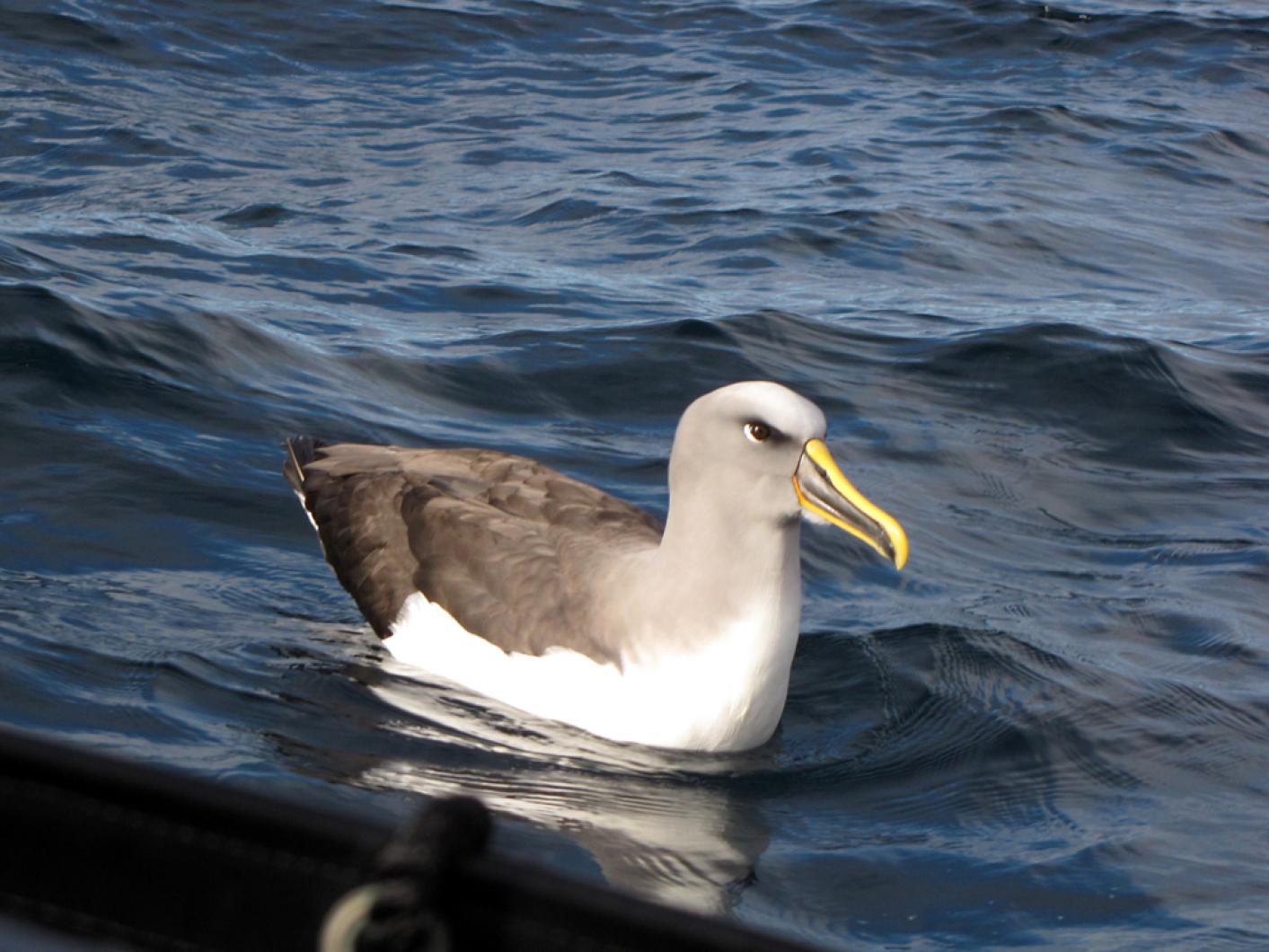There are very few people in the world who would take a vacation to the Southern Ocean. Flip and I and 60 others are part of these few. The flights alone might discourage the weak at heart. They started on the Vineyard, thence to Boston, Newark, N.J., San Francisco, over the international dateline to land, 20-plus hours and a day later, in Auckland, New Zealand.
We always arrive a “bit on the l lee side” for a vacation. A day and a half later we met the rest of the crew, and we flew 500 miles offshore in a southeasterly direction to the Chatham Islands. The 10 islands which make up the Chathams marked the beginning of our voyage south along a group of five other islands. They all were located off the coast of the South Island of New Zealand. These unique islands are located between the Roaring Forties and the Furious Fifties, both well known areas for foul weather.
Why take this cruise? Well, the Furious Fifties are also known as the Albatross Latitudes and we were not disappointed. Not only did we see 14 different species of albatrosses, but we spotted numerous species of land birds which are found on the various islands and nowhere else in the world! On the Chathams alone we spotted half of the 18 endemic species including an elegant shore plover and Chatham Island parakeet.
A good number of the islands we sailed through do not allow people to land so as to protect their pristine nature. Many of these islands have had animals and plants introduced which wiped out or replaced the native plants and animals. However, the Department of Conservation has given all the islands we sailed to or around the highest possible protection because of the special flora and fauna they boast. In many cases the Department of Conservation has eradicated the introduced species and reintroduced the birds and plants which had inhabited the islands but had been decimated by the introduced species.
Our arrival at Chatham Island airport was educational from the start. The island is the first place to see the sunrise! We explored the island by foot and van and had an introduction to the history of the Maoris and Moriori people. The Moriori people, the first to settle the Chathams, were of Polynesian decent and forbade tribal warfare. Their posture on warfare caused their demise, as both the Europeans and Maoris used force to take over the Chathams. At the start of the 20th century there were only 12 full-blooded Moriori left, and in 1933 the last of the full-blooded Moriori died. There are a handful of non full-blooded Morioris who are trying to teach the youth the history, culture and mores of their tribe so they will not be forgotten.
We had a great group of ornithologists, botanists, historians and members of the New Zealand Department of Conservation on board the mother ship and with us on zodiac trips to enlighten us.
Bird Sightings
Don’t forget the Christmas Bird Count on Jan. 3. If you are not helping in the field, please watch your feeders, make a list of what you have seen and how many and then report your findings to Felix Neck Wildlife Sanctuary at 508-627-4850.
Sarah Mayhew spotted and photographed a Bonaparte’s gull in Vineyard Haven harbor on Dec. 18.
Dec. 20 Lanny McDowell of West Tisbury, spotted and photographed his first yard visit of a savannah sparrow. This sparrow was no doubt driven to Lanny’s feeder food source by the weather.
Dec. 22 Rita Brown called to say she was startled to see a great blue heron flying across the Takemmy Trail near Meeting House Road. She figures it was flying from Edgartown Great Pond to Sengekontacket Pond. Any place for open water!
Dec. 23 Shane Ben David called his father Gus to report that he had spotted a woodcock at the Edgartown water station. This is a good bird for this time of year.
The same day Warren Woessner visited Squibnocket and during a chilly walk he spotted 25 purple sandpipers, three sanderlings, a black-bellied plover and the most interesting, a gadwall in the surf. Again this duck was probably looking for open water.
Gus Ben David reported the first barn owl casualty on Dec. 24. The snow cover and cold weather are very tough on the barn owl pairs on the Island. They are unable to hunt the fields and meadows for mice, voles and shrews so end up starving. Gus is asking people who find dead barn owls to please call him at 508-627-5634 to report deaths. He would like to collect all carcasses and if you do not wish to collect the bird, Gus will arrange to pick the owl up himself.
Gus has been working on helping barn owl pairs on the Island for many years and wants to keep track of the population. At present there are 15 pairs of barn owls and we are hoping the Island will maintain this population and increase it.
Please report your bird sightings to the Martha’s Vineyard Bird Hotline at 508-627-4922 or e-mail to birds@mvgazette.com.




Comments
Comment policy »